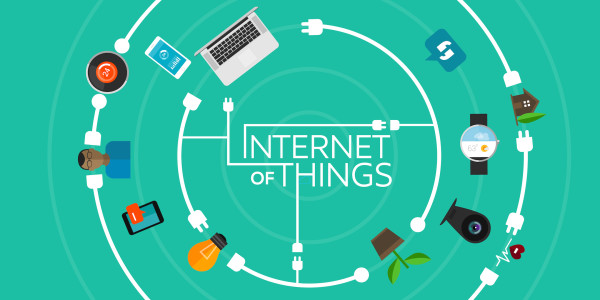
You may have heard that we’re finally entering the Internet of Things (IoT) era. IoT refers to everyday objects being embedded with computing devices that can be interconnected via the Internet. The connected objects are then able to send and receive data. The idea is that basically everything will be Internet connected in some form or fashion, allowing for massive data tracking and management.
Nowhere is IoT more apparent than the home security industry. When smart home security devices were first introduced they were novel concepts. Homeowners loved the idea of being able to remotely keep tabs on their home security system by simply checking their phone. Today, home security has gotten so high-tech, that market leaders like Nortek Security & Control now offer virtual doorbells in addition to other home security equipment.
Modern day technology is rapidly transforming homes across the country. The result is smarter homes that are more efficient, safer and comfortable to live in. As the Internet and Wi-Fi services expand, you can expect to see the smart home devices below become standard equipment rather than the exception.
Connected Home Security Equipment
As noted above home security was one of the first industries to make use of Wi-Fi connectivity. Home security can be tricky because all it takes is one weak spot to make a house susceptible to burglary. Smart home security systems now offer a truly comprehensive way to protect and monitor your home like never before.
Smart cameras, alarms, motion sensors, locks and lights can all be interconnected over Wi-Fi. Some systems even allow you to sync equipment and set schedules in addition to monitoring your home security from a mobile device. If a window cracks or a motion light goes off you’ll know instantly and can react quickly.
Discerning Smoke Alarms
Improving the safety of your home goes beyond security systems. Fires are one of the biggest dangers within a household. The National Fire Protection Association has been collecting house fire data for decades. Since 1977 the number of annual house fires has been cut almost in half, however, there were still 365,500 fires in 2015.
Standard smoke alarms have long been highly recommended. They’re so beneficial in protecting property and life that rental units are required to have smoke alarms. Old versions are effective, but new smart smoke alarms make up for a few big shortcomings. New smart smoke alarms overcome a number of shortcoming that plagued old devices. They can:
· Tell the difference between smoke from cooking and smoke from fire.
· Send alerts to a mobile device if the alarm is triggered.
· Send an alert if the battery needs to be changed.
Voice Assistants
We’ve all come across times when we need to look something up, but doing a Google search just isn’t convenient. Enter the voice assistant. Devices like Echo are quickly catching on as homeowners realize this one, relatively affordable device can make life much easier.
Voice assistants have a Wi-Fi connected computer inside that’s able to listen to a person’s commands and respond back. For example, in the middle of cooking a meal, you can ask a voice assistant to look up the recipe and tell you the quantity of an ingredient.
As the technology improves, voice assistants are expected to become widely adopted. It’s not unfeasible for voice assistants to be as common as computers in the near future. There are also so many possibilities to expand on the technology that some experts believe devices like Echo will become a new marketing space. This is definitely true for apps like Pandora that play commercials between songs.
Smart Appliances
The number of smart home devices is expected to grow from 83 million in 2015 to over 193 million in 2020. Smart appliances will play a role in the growth.
Appliances are large, expensive pieces of equipment for the home. People are willing to pay a little extra for smart features that make an appliance safer and more efficient. Developers are not only finding ways to make the appliance itself smarter, they’re also creating compatible devices like milk trays that tell you when the gallon is almost out.
Technology is helping homeowners protect their families, reduce energy consumption, improve comfort and automate tasks to save time. With so many possibilities a click away, IoT is destined to become a defining element of future homes.




 POSTED BY
POSTED BY 

